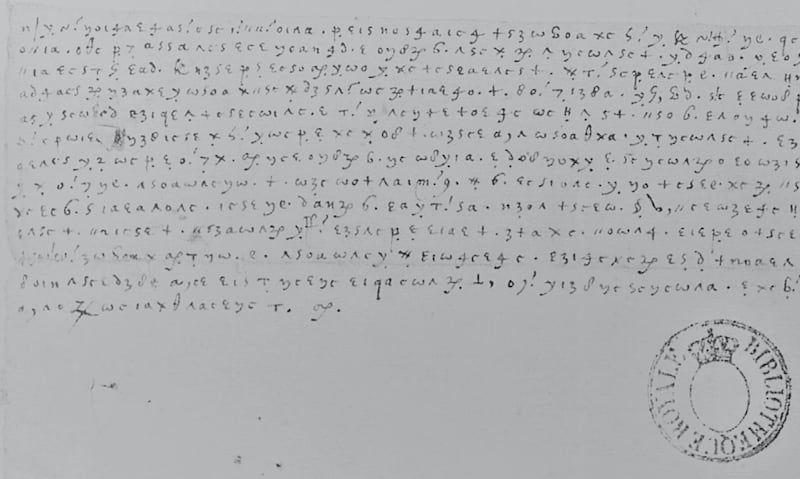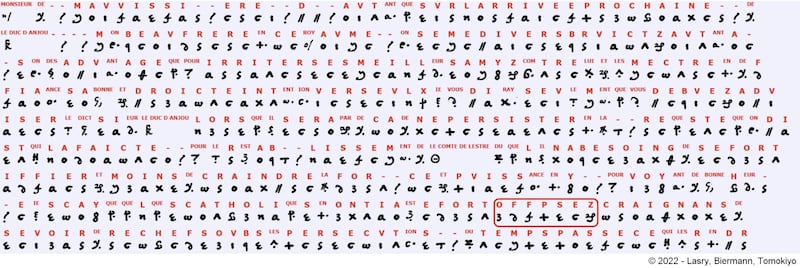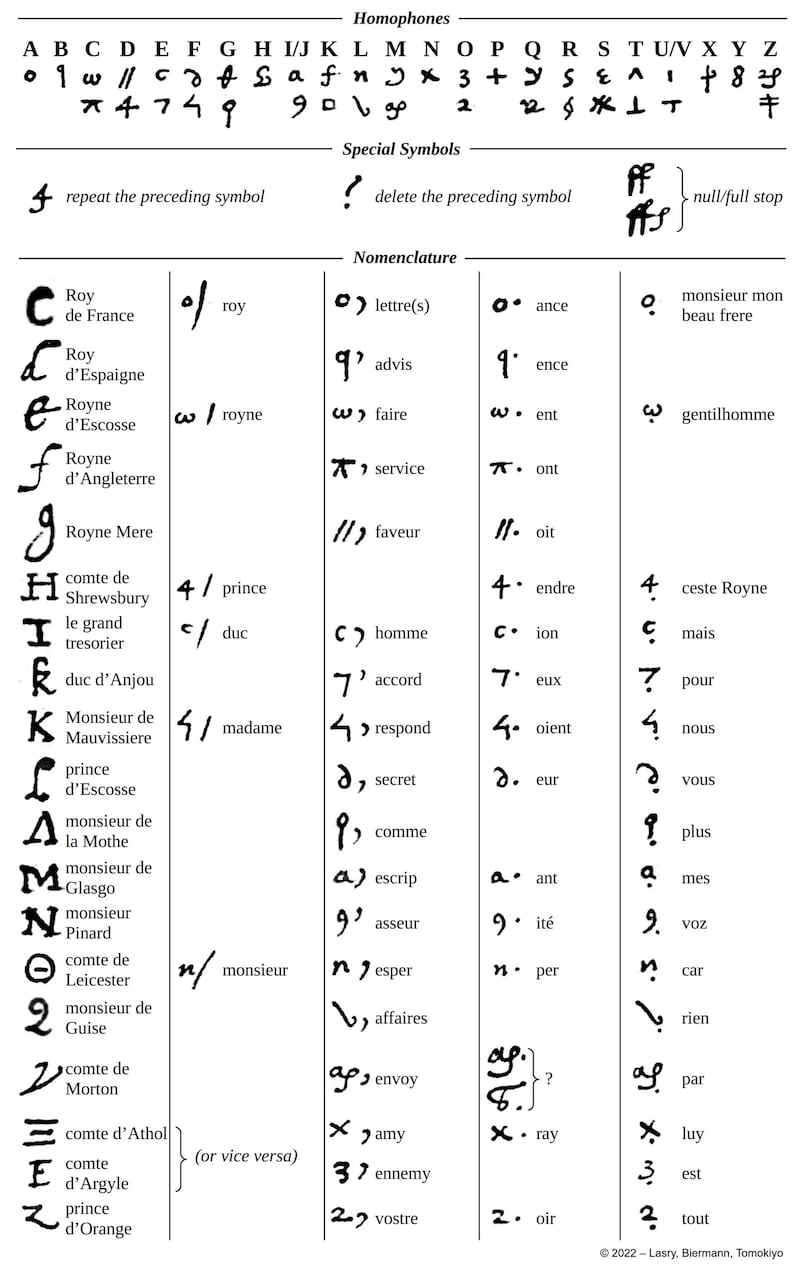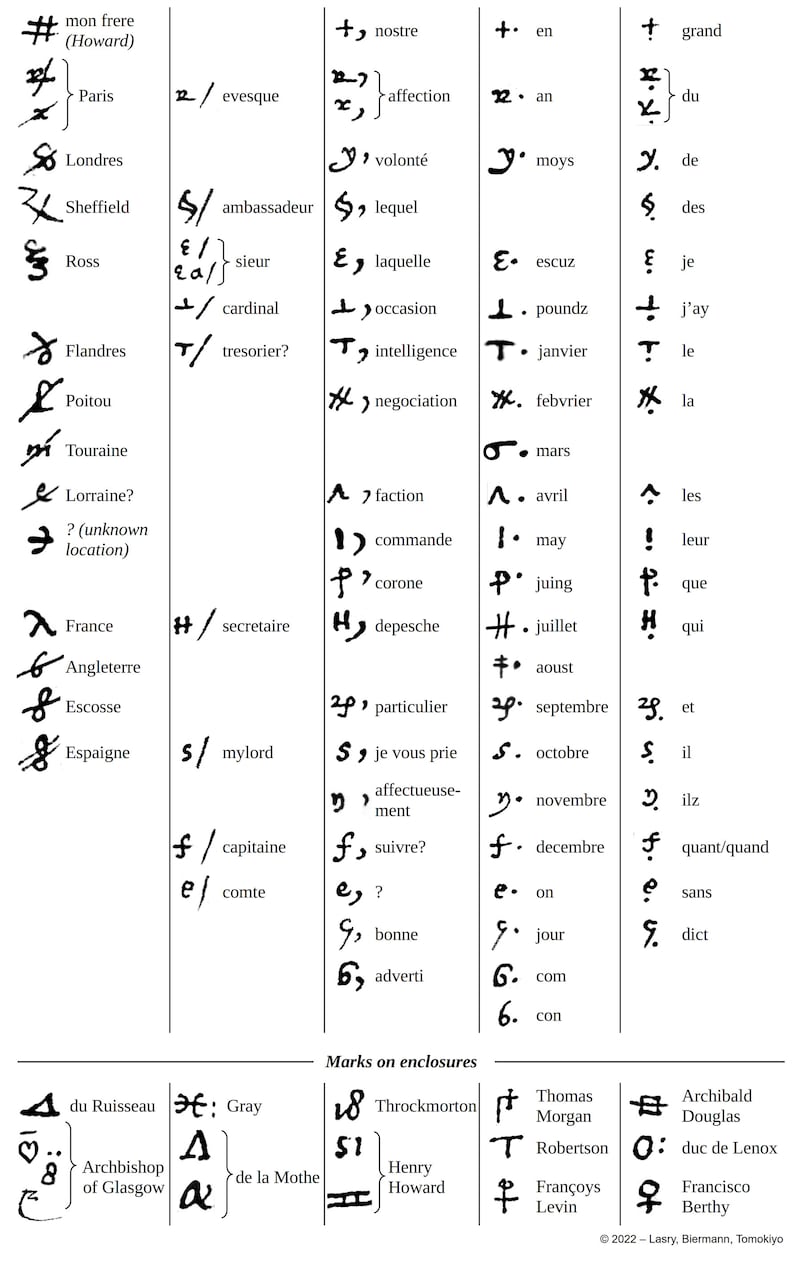Deep in the archives of France’s national library, an assortment of coded letters listed as Italian texts lay untouched for more than 400 years. But when three code breakers – a German pianist, an Israeli computer scientist and a Japanese physicist – stumbled upon them, they discovered something remarkable.
They were, they found, not Italian texts at all.
Instead, they were part of the secret prison correspondence of Mary, Queen of Scots, whose tragic life and tangled role in the lethal dynastic and religious politics of 16th-century Europe have long fascinated writers and historians. One leading biographer of Mary described the discovery as the most significant in the study of her life for more than a century.
“We found treasure lying in plain sight,” says George Lasry, the Israeli computer scientist who led the yearlong project, which was released to the public on Wednesday, the 436th anniversary of Mary’s death.
Mary became the queen of Scotland when she was just six days old, in 1542, but was imprisoned and forced to give up her throne in 1567. She escaped to England, only to be jailed again by her cousin Queen Elizabeth I as a threat to her own rule. After 19 years as a prisoner, she was eventually executed in 1587, at the age of 44, accused of involvement in a Catholic plot to assassinate the Protestant Elizabeth.

The 57 letters, written between 1578 and 1584 and previously believed lost, include her thoughts about her ailing health, her conditions as a captive in a series of English castles and her failed attempts to secure her freedom.
She also expressed her deep anguish over her separation from her son, James, made king of Scotland at the age if one by her forced abdication, as well as her mistrust of Elizabeth’s spymaster, Sir Francis Walsingham.
The bulk of the coded letters were intended for France’s ambassador to England, Michel de Castelnau, who supported Mary’s claim to the throne. As a descendant of King Henry VII, she was regarded by many of her fellow Catholics not only as a potential champion for their faith but also as England’s legitimate queen: Elizabeth was the child of King Henry VIII’s second wife, Anne Boleyn, whose marriage the Catholic Church did not recognise.
Instead, Elizabeth was eventually succeeded by James, who was raised as a Protestant by Scottish nobles.
The existence of a confidential line of communication between Mary and the ambassador was already well known to historians, but the code breakers’ findings indicated that it was in place much earlier than previously thought.



“I cannot thank you enough for the care, vigilance and entirely good affection with which I see that you embrace everything that concerns me and I beg you to continue to do so more strongly than ever, especially for my said release,” Mary wrote to the ambassador in one letter, dated to April 16th, 1583.
As the code breakers – Lasry, Norbert Biermann of Germany and Satoshi Tomokiyo of Japan – were cast into the international spotlight on Wednesday, they reflect on the year of late nights they had put into deciphering the 50,000 words, initially without knowing their famous author.
“It took a lot of time and effort,” Lasry says. “We all have our day jobs. We just do this in our evenings and weekends.”
After deciphering that the woman writing the messages had a son, the team spotted several mentions of “ma liberté”, as well as the name “Walsingham”. It was only then that they understood the significance of the documents.
“When we finally realised what it was,” Lasry says, “I remember thinking, ‘No way. It cannot be that we just stumbled upon this by chance. It surely would have been discovered much, much earlier.’”
Mary’s encoding was complex, he adds. “The cipher has 200 different symbols, which can all represent letters, numbers and names,” Lasry says. “You have no idea of the date, the recipient or the sender. Nobody could have guessed what it was.
“It was kind of like an onion you have to peel,” he says. “We had to work layer by layer.”
John Guy, a Cambridge University historian whose 2004 biography of Mary was the basis of a 2018 film starring Saoirse Ronan and Margot Robbie, said in a statement that the findings were a “literary and historical sensation”.
“They will occupy historians of Britain and Europe and students of the French language and early modern ciphering techniques for many years to come,” he said.
For now, with a second phase of the project already under way, there is no holiday on the horizon for the code breakers.
“We are not going to take a break,” Lasry says. “We never stop. We always look for new ciphers.” – This article originally appeared in The New York Times










